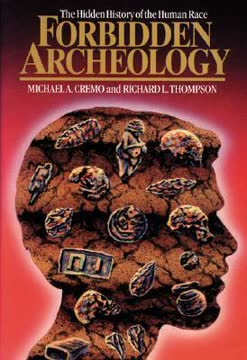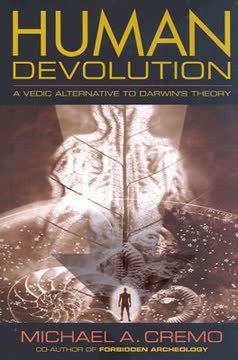Key Takeaways
1. Anomalous Finds Challenge Accepted Theories
The objections made to the existence of man in the Pliocene and Miocene seem to habitually be more related to theoretical considerations than direct observation.
Challenging the Narrative. The book presents a wealth of archeological and paleontological evidence that contradicts the standard narrative of human evolution. These "anomalous" finds, often dismissed or ignored, suggest that anatomically modern humans may have existed much earlier than currently accepted, coexisting with more primitive hominids.
Double Standard. The authors argue that a double standard exists in the evaluation of paleoanthropological evidence. Evidence supporting the dominant theory is often accepted with less scrutiny than evidence that challenges it. This leads to a "knowledge filter" that obscures the true picture of human origins.
The Need for Openness. The authors call for a more open and critical approach to the study of human origins, one that is willing to consider all available evidence, regardless of whether it fits neatly into existing theories. This includes re-examining previously dismissed finds and challenging the assumptions that underpin current models of human evolution.
2. Modified Bones: Intentional or Natural?
The objections made to the existence of humans in the Pliocene and Miocene seem to habitually be more related to theoretical considerations than direct observation.
Cut Marks and Intentional Breakage. The presence of cut marks and intentional breakage on animal bones is a key indicator of human activity in archeological sites. Numerous discoveries of such bones in unexpectedly old geological contexts suggest that humans or their ancestors were using tools much earlier than previously thought.
St. Prest Example. The discovery of incised bones at St. Prest, France, in strata dating back to the Early Pleistocene or Late Pliocene, sparked controversy. While some argued that the marks were caused by animals or geological pressure, others maintained that they were the result of human tool use.
Modern Relevance. The authors point to the Old Crow River site in Canada as a modern example of the challenges in distinguishing between human-made and natural modifications to bone. Despite advances in taphonomy, the interpretation of modified bones remains a complex and subjective process.
3. Eoliths: Primitive Tools or Nature's Pranks?
The most rudimentary stone tools, the eoliths (“dawn stones”) are the subject of Chapter 3. These implements, found in unexpectedly old geological contexts, inspired protracted debate in the late nineteenth and early twentieth centuries.
The Dawn Stones. Eoliths, or "dawn stones," are rudimentary stone tools found in unexpectedly old geological contexts. These implements, often simple flakes with chipped edges, sparked intense debate in the late 19th and early 20th centuries.
Kent Plateau and East Anglia. Discoveries by Benjamin Harrison on the Kent Plateau and J. Reid Moir in East Anglia revealed eoliths in Pliocene and even Eocene formations. While some scientists supported the human origin of these tools, others argued that they were the result of natural forces.
The Eolith Debate. The eolith controversy highlights the challenges in distinguishing between human-made and naturally occurring modifications to stone. Critics argued that eoliths could be produced by tumbling in stream beds or other geological processes.
4. Crude Paleoliths: A Step Beyond Eoliths
On the whole, the evidence for these Miocene implements seems to be very conclusive, and the objections to have hardly any other ground than the reluctance to admit the great antiquity of man.
Deliberate Shaping. Crude paleoliths represent a step beyond eoliths, with evidence of deliberate shaping of stone cores and flakes into recognizable tool types. These implements, found in Miocene and Oligocene formations, further challenge conventional timelines of human evolution.
Thenay and Aurillac. Discoveries by Carlos Ribeiro in Portugal and Abbé Bourgeois in France revealed crude paleoliths in Miocene formations. These finds, like the eoliths, were met with skepticism and resistance from the scientific community.
Rutot's Discoveries. A. Rutot's discovery of an extensive collection of paleoliths of Oligocene age (25 to 38 million years old) at Boncelles, Belgium, further fueled the debate. Critics, however, dismissed these finds as products of natural forces.
5. Advanced Tools in Ancient Contexts
The kinds of implements found by Carlos Ameghino at Miramar (arrowheads and bolas) are usually considered the work of Homo sapiens sapiens. Taken at face value, the Miramar finds therefore demonstrate the presence of anatomically modern humans in South America over 3 million years ago.
Challenging the Timeline. The discovery of advanced stone implements, such as arrowheads and bolas, in unexpectedly old geological contexts presents a significant challenge to current theories of human evolution. These finds suggest that anatomically modern humans may have existed much earlier than previously thought.
Miramar Discoveries. Florentino Ameghino and his brother Carlos made numerous discoveries of advanced stone tools in Pliocene formations at Miramar, Argentina. These finds, including an arrowhead embedded in a Toxodon femur, suggest that Homo sapiens sapiens may have been present in South America over 3 million years ago.
Data Suppression. The authors argue that the suppression of data, such as the Miramar finds, has a long history in paleoanthropology. This pattern of data suppression has led to a distorted picture of human origins and antiquity.
6. Skeletal Anomalies: Modern Humans in the Distant Past
By means of a despotic scientific prejudice, call it what you will, every discovery of human remains in the Pliocene has been discredited.
Challenging the Narrative. The discovery of anomalously old skeletal remains of the anatomically modern human type presents a direct challenge to current theories of human evolution. These finds, often dismissed or discredited, suggest that humans like ourselves may have existed millions of years ago.
Castenedolo Skulls. The discovery of fossil bones of several Homo sapiens sapiens individuals in layers of Pliocene sediment 3 to 4 million years old at Castenedolo, Italy, is one of the most interesting cases. Critics typically respond that the bones must have been placed into these Pliocene layers fairly recently by human burial.
Knowledge Filtration. The authors argue that a process of knowledge filtration has left current workers with a radically incomplete collection of facts. This process of knowledge filtration has been going on for well over a century and continues right up to the present day.
7. Java Man: A Turning Point and Lingering Questions
As far as we can see, this means that we now have an anatomically modern human femur and a Homo erectus skull in a Middle Pleistocene stratum that is considered to be 800,000 years old.
The Missing Link. The discovery of Java man (Pithecanthropus erectus) by Eugene Dubois in Java during the late 19th century marked a turning point in the study of human origins. This find, now classified as Homo erectus, provided a long-awaited "missing link" between apes and humans.
Shifting Interpretations. Modern researchers have reinterpreted the original Java Homo erectus fossils. The famous bones reported by Dubois were a skullcap and femur. Although the two bones were found over 45 feet apart, Dubois said they belonged to the same individual. But in 1973, M. H. Day and T. I. Molleson determined that the femur found by Dubois is different from other Homo erectus femurs and is in fact indistinguishable from anatomically modern human femurs.
Misleading Presentations. The authors argue that misleading presentations of the Java Man evidence have been used to suppress evidence for a human presence in the Pliocene and earlier. This has led to a distorted picture of human origins and antiquity.
8. Piltdown: A Cautionary Tale of Deception and Bias
Piltdown might have offered irresistible attraction to some fanatical biologist to make good what Nature had created but omitted to preserve.
The Hoax. The Piltdown hoax, involving the deliberate fabrication of a human ancestor, serves as a cautionary tale about the potential for fraud and bias in paleoanthropology. The discovery of Piltdown man, consisting of a humanlike skull and apelike jaw, was initially hailed as a major breakthrough in understanding human evolution.
The Forger. In the 1950s, J. S. Weiner, K. P. Oakley, and other British scientists exposed Piltdown man as an exceedingly clever hoax, carried out by someone with great scientific expertise. Some blamed Dawson or Teilhard de Chardin, but others have accused Sir Arthur Smith Woodward of the British Museum, Sir Arthur Keith of the Hunterian Museum of the Royal College of Surgeons, William Sollas of the geology department at Cambridge, and Sir Grafton Eliot Smith, a famous anatomist.
Genuine Fossil? There is substantial, though not incontrovertible, evidence that the Piltdown skull, at least, was a genuine fossil. The Piltdown gravels in which it was found are now thought to be 75,000 to 125,000 years old. An anatomically modern human skull of this age in England would be considered anomalous.
9. China's Hominid Puzzle: Dating by Morphology
The practice of morphological dating substantially distorts the hominid fossil record.
Peking Man. The discovery of Peking man fossils at Zhoukoudian (formerly Choukoutien) in China during the 1920s provided further evidence for Homo erectus. However, the dating of these fossils and other hominid finds in China is problematic.
Morphological Dating. Chinese workers have reported discoveries of australopithecines, various grades of Homo erectus, Neanderthaloids, early Homo sapiens, and anatomically modern Homo sapiens. The dating of these hominids is problematic. They occur at sites along with fossils of mammals broadly characteristic of the Pleistocene. In reading various reports, we noticed that scientists routinely used the morphology of the hominid remains to date these sites more precisely.
Overlapping Date Ranges. The authors argue that the practice of morphological dating substantially distorts the hominid fossil record. In effect, scientists simply arrange the hominid fossils according to a favored evolutionary sequence, although the accompanying faunal evidence does not dictate this. If one considers the true probable date ranges for the Chinese hominids, one finds that various grades of Homo erectus and various grades of early Homo sapiens (including Neanderthaloids) may have coexisted with anatomically modern Homo sapiens in the middle Middle Pleistocene, during the time of the Zhoukoudian Homo erectus occupation.
10. Wildmen: Coexistence in the Present?
Opinions vary, but I guess the commonest would be that there is indeed sufficient evidence to suggest at least the possibility of the existence of various unclassified manlike creatures, but that in the present state of our knowledge it is impossible to comment on their significance in any more detail.
Unclassified Manlike Creatures. Over the past century, scientists have accumulated evidence suggesting that humanlike creatures resembling Gigantopithecus, Australopithecus, Homo erectus, and the Neanderthals are living in various wilderness areas of the world. In North America, these creatures are known as Sasquatch. In Central Asia, they are called Almas. In Africa, China, Southeast Asia, Central America, and South America, they are known by other names. Some researchers use the general term "wildmen" to include them all.
Eyewitness Accounts. Scientists and physicians have reported seeing live wildmen, dead wildmen, and footprints. They have also catalogued thousands of reports from ordinary people who have seen wildmen, as well as similar reports from historical records.
Mainstream Science. Mainstream science tends to dismiss wildman reports as folklore, misidentification, or hoaxes. However, the authors argue that the sheer volume and consistency of the evidence warrant further investigation.
11. Africa: The Cradle of Controversy
In the uproar, at the time, as to whether or not these creatures were near ape or human, the opinion that they were human won the day. This may well have resulted not only in the defeat of the contrary opinion but also the burying of that part of the evidence upon which the contrary opinion was based.
Reck's Skeleton. The discovery of Reck's skeleton, a complete anatomically modern human skeleton in strata over 1 million years old at Olduvai Gorge, Tanzania, sparked decades of controversy. This find, along with the Laetoli footprints, provides evidence for anatomically modern humans in the Early Pleistocene and Late Pliocene.
Australopithecus. The authors examine the status of Australopithecus, the "southern ape," and question the conventional view that it was a human ancestor with an apelike head, a humanlike body, and a humanlike bipedal stance and gait. Other researchers make a convincing case for a radically different view of Australopithecus.
Oxnard's Critique. Physical anthropologist C. E. Oxnard found the australopithecines to be anatomically similar to orangutans and said "it is rather unlikely that any of the Australopithecines . . . can have any direct phylogenetic link with the genus Homo." This view challenges the dominant narrative of human evolution in Africa.
12. The Knowledge Filter: A Persistent Obstacle
There exists in the scientific community a knowledge filter that screens out unwelcome evidence. This process of knowledge filtration has been going on for well over a century and continues right up to the present day.
Screening Out Unwelcome Evidence. The authors argue that a "knowledge filter" exists in the scientific community, screening out evidence that contradicts dominant theories of human origins. This process of knowledge filtration has been going on for well over a century and continues right up to the present day.
Double Standard. The authors identify a double standard in the treatment of evidence. Evidence that supports the dominant theory is often accepted with less scrutiny than evidence that challenges it.
Need for Open Discourse. The authors call for a more open and critical approach to the study of human origins, one that is willing to consider all available evidence and challenge the assumptions that underpin current models of human evolution.
Last updated:
FAQ
1. What is Forbidden Archeology: The Hidden History of the Human Race by Michael A. Cremo about?
- Exploration of human origins: The book investigates controversial archeological and fossil evidence suggesting anatomically modern humans existed millions of years ago, far earlier than mainstream science accepts.
- Challenge to evolutionary timeline: It questions the conventional evolutionary model, which posits that Homo sapiens arose recently and evolved from apelike ancestors.
- Focus on suppressed evidence: Michael A. Cremo compiles and analyzes reports of ancient human artifacts and remains that have been ignored or dismissed by the scientific community.
2. Why should I read Forbidden Archeology by Michael A. Cremo?
- Uncovers overlooked discoveries: The book brings to light a vast body of scientific reports and findings that have been forgotten or marginalized, offering a more nuanced view of human antiquity.
- Encourages critical thinking: It challenges readers to question scientific assumptions and biases, especially in paleoanthropology and the construction of scientific knowledge.
- Interdisciplinary perspective: The work integrates insights from sociology, philosophy, and history of science, making it valuable for those interested in how scientific paradigms are formed and maintained.
3. What are the key takeaways from Forbidden Archeology by Michael A. Cremo?
- Existence of anomalous evidence: There is substantial, well-documented evidence of anatomically modern humans and tool use dating back to the Miocene and Pliocene epochs.
- Double standard in science: The scientific community often applies stricter scrutiny to evidence that contradicts prevailing theories, leading to the suppression of anomalous findings.
- Call for open discourse: The authors advocate for treating all evidence with equal rigor and openness, which could radically alter our understanding of human evolution.
4. What is the "knowledge filter" concept in Forbidden Archeology by Michael A. Cremo?
- Definition and function: The "knowledge filter" refers to the social and institutional processes within science that selectively accept evidence supporting dominant theories while rejecting or ignoring contradictory evidence.
- Impact on research: This filter has led to the exclusion of anomalous findings, such as ancient human skeletal remains and stone tools, from mainstream paleoanthropology.
- Not a conspiracy: The authors clarify that this is not a deliberate conspiracy but a social process influenced by theoretical commitments and professional interests.
5. What kinds of anomalous evidence does Forbidden Archeology by Michael A. Cremo discuss?
- Ancient stone tools: The book details crude and advanced stone implements (eoliths, bolas, scrapers) found in Miocene, Pliocene, and even older geological contexts.
- Human skeletal remains: Fossils of anatomically modern humans have been reported in strata dated millions of years old, from sites in Europe, Africa, the Americas, and Asia.
- Footprints and incised bones: Humanlike footprints (e.g., Laetoli) and fossil bones with cut marks consistent with tool use are presented as evidence of early human activity.
6. How does Forbidden Archeology by Michael A. Cremo critique mainstream dating methods in paleoanthropology?
- Radiometric dating limitations: The book discusses the unreliability of chemical and radiometric dating techniques, such as carbon-14 and potassium-argon, especially when applied to contaminated or surface finds.
- Stratigraphic context importance: It emphasizes the need to prioritize original stratigraphic observations and geological context over isolated radiometric dates.
- Morphological dating concerns: The author criticizes the practice of assigning fossil ages based on physical features to fit evolutionary models, rather than on secure stratigraphic or radiometric evidence.
7. What is the significance of the Laetoli footprints in Forbidden Archeology by Michael A. Cremo?
- Age and morphology: The Laetoli footprints, dated to about 3.6 million years ago, are indistinguishable from those of modern humans, suggesting the presence of anatomically modern feet far earlier than accepted.
- Contradiction with fossil evidence: Known australopithecine fossils from the same period have apelike feet, incompatible with the footprints, implying coexistence of modern and apelike hominids.
- Challenge to evolutionary theory: This evidence supports the book’s thesis that modern humans may have existed millions of years ago, contradicting the standard evolutionary timeline.
8. How does Forbidden Archeology by Michael A. Cremo address the controversies surrounding Java Man and Peking Man?
- Questionable associations: The book argues that the Java Man skull and femur were found separately and likely belonged to different species, with the femur resembling modern humans.
- Surface finds and dating issues: Most Java Man and Peking Man fossils were surface finds with uncertain stratigraphic context, making their assigned ages questionable.
- Scientific and political influences: The book discusses how funding, scientific biases, and institutional support shaped the acceptance of these fossils as key evolutionary links despite uncertainties.
9. What is the significance of eoliths and other crude stone tools in Forbidden Archeology by Michael A. Cremo?
- Definition and debate: Eoliths are crude stone tools, often indistinguishable from naturally broken stones, found in very ancient geological contexts.
- Controversy over authenticity: The book details scientific debates over whether these implements are genuine artifacts or products of geological processes, with some experts affirming their human origin.
- Implications for human antiquity: Acceptance of eoliths as human-made would push back the timeline for toolmaking hominids by millions of years.
10. How does Forbidden Archeology by Michael A. Cremo describe the scientific community’s reaction to anomalous evidence?
- Skepticism and dismissal: Scientists often propose alternative explanations such as intrusion, fraud, or natural processes to discredit evidence for ancient humans.
- Double standards: Evidence supporting evolutionary theory is accepted with less scrutiny, while contradictory findings face extreme skepticism and are often ignored.
- Suppression of data: Many important discoveries have been omitted from textbooks or relegated to obscurity because they challenge the dominant evolutionary paradigm.
11. What are the main critiques of Australopithecus and Homo habilis in Forbidden Archeology by Michael A. Cremo?
- Australopithecus as ancestor questioned: The book highlights critiques by scientists who argue Australopithecus was more apelike and arboreal, not a direct human ancestor.
- Morphological ambiguity: Fossils attributed to Homo habilis show a mix of humanlike and apelike features, with some specimens being very small and primitive.
- Taxonomic doubts: The book discusses debates over whether Homo habilis is a valid species or a composite of multiple species, reflecting the complexity of early hominid classification.
12. What are the broader implications of Forbidden Archeology by Michael A. Cremo for the study of human evolution?
- Questioning linear progression: Evidence of anatomically modern humans coexisting with apelike creatures millions of years ago challenges the idea of a straightforward evolutionary sequence.
- Need for paradigm shift: The book calls for consistent application of scientific standards and open-minded consideration of all evidence, including anomalous finds.
- Potential for revised history: If the evidence presented is accepted, it could radically alter our understanding of human origins, antiquity, and the development of culture.
Review Summary
Forbidden Archeology receives mixed reviews, with many praising its extensive research and challenge to mainstream archaeological theories. Supporters find it eye-opening and thought-provoking, appreciating the alternative perspective on human origins. Critics argue it's pseudoscientific and cherry-picks evidence to support predetermined conclusions. Some readers find it dense and repetitive, while others consider it a landmark work. The book's controversial claims about human antiquity and its critique of established evolutionary timelines spark debate among readers, with some viewing it as revolutionary and others dismissing it as misguided.
Similar Books

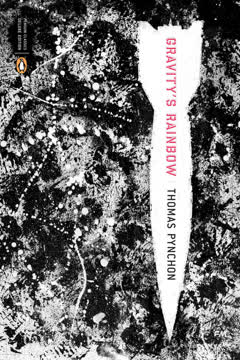
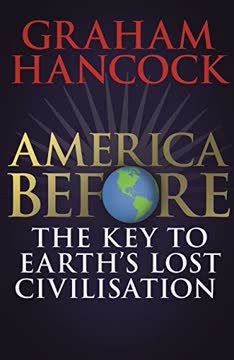

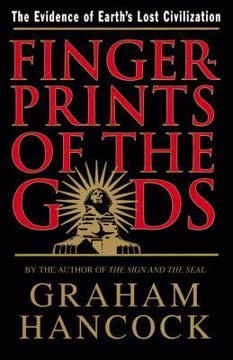
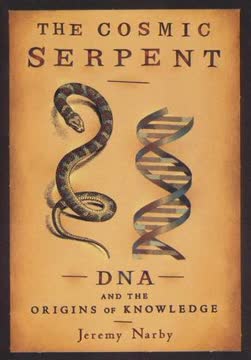

Download PDF
Download EPUB
.epub digital book format is ideal for reading ebooks on phones, tablets, and e-readers.
